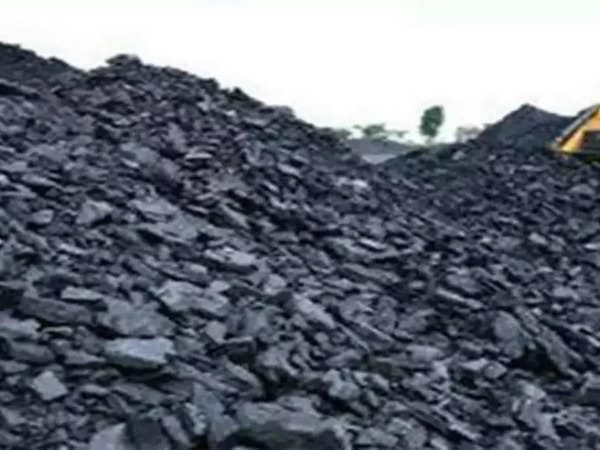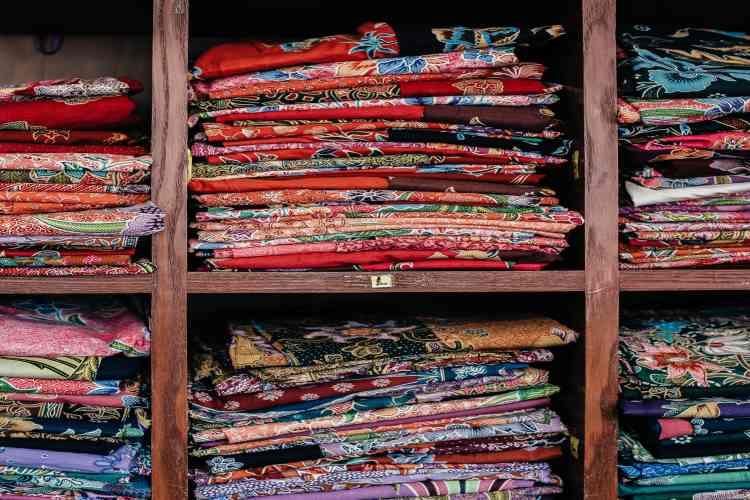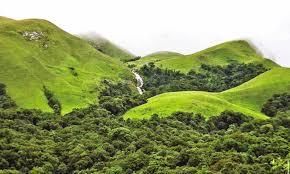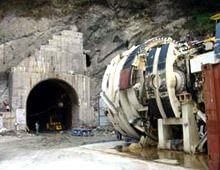UPSC Daily Current Affairs: 31st March 2025 | Current Affairs & Hindu Analysis: Daily, Weekly & Monthly PDF Download
GS2/Polity
House Panel Urges Labour Code Implementation and Revival of Tripartite Dialogue
 Why in News?
Why in News?
The Labour Standing Committee of Parliament has criticized the Union Labour Ministry for failing to convene the Indian Labour Conference (ILC) over the past decade. This situation highlights the urgent need for dialogue and reform in India's labour regulatory framework.
- The consolidation of 29 central labour laws into four Labour Codes was completed between 2019 and 2020.
- Despite legislative approval, full operationalization of these codes remains pending due to delays in rule implementation by states.
- The Parliamentary Standing Committee has called for the revival of the ILC to foster dialogue among stakeholders.
- Women's workforce participation is on the rise, necessitating targeted outreach and support measures.
Additional Details
- Four Labour Codes Overview:
- The Code on Wages, 2019: Amalgamates laws related to wages and ensures universal minimum wage coverage and streamlined payment processes.
- The Industrial Relations Code, 2020: Consolidates laws governing trade unions and disputes, balancing worker rights with employer flexibility.
- The Social Security Code, 2020: Extends social security benefits to both organized and unorganized sectors, including gig workers.
- The Occupational Safety, Health and Working Conditions Code, 2020: Addresses safety and welfare conditions for workers across various establishments.
- Implementation Challenges: The committee noted that while 32 States and Union Territories have pre-published rules, actual enforcement is lacking, particularly in states like West Bengal and Lakshadweep.
- Importance of ILC: The ILC serves as a crucial platform for tripartite dialogue, which has not been held since 2015, underscoring the need for formal consultations amid ongoing labor reforms.
- Women's Workforce Participation: The Worker Population Ratio (WPR) among women increased significantly from 28.7% in 2019-20 to 40.3% in 2023-24, driven by various policy interventions.
The committee advocates for expedited implementation of the labour codes, resumption of the Indian Labour Conference, and better capacity-building for labour officials. These steps are essential to adapt to India's evolving employment landscape, which includes gig and informal work, ensuring worker protection and economic inclusivity.
GS3/Economy
India’s Coal Dependence Rises to 79%
 Why in News?
Why in News?
According to the Ministry of Statistics and Programme Implementation (MoSPI) in its Energy Statistics in India 2025 report, coal has contributed significantly to India's energy generation, accounting for 79% of the total energy output, which translates to 16,906 petajoules (PJ). This represents a 2% increase from the previous year.
- Dominance: Coal's share in India's total energy generation has remained at 79% for the fiscal year 2023-24.
- Production Growth: A 12% increase in coal production was recorded in 2023-24, following a 15% growth in 2022-23.
- Dependence on Imports: India remains 26% dependent on coal imports, down from 31% in 2019-20.
India’s Total Energy Basket
- Nuclear Energy: Contributes approximately 1.7% to total electricity generation capacity, with an installed capacity of about 8,180 MW.
- Crude Oil: Its share has decreased from 11% in 2014-15 to 6% in 2023-24.
- Natural Gas: Similar decline observed, decreasing from 9% in 2014-15 to 7% in 2023-24.
- Renewable Energy: Despite investments, renewable sources contribute only 7% to the total energy mix in 2023-24.
Shift Towards Renewable Energy
- Total Contribution: Renewable sources accounted for 7% of India’s total energy production in 2023-24, showing a modest increase from 6% in 2014-15.
- Growth in Solar and Wind Energy: Generation from these sources surged by 210% over the last decade.
- Key Renewable Energy Potential:
- Wind Energy: Holds the largest share at 55.17%, with a potential of 1,163,856 MW.
- Solar Energy: Contributes 35.50% with a potential of 748,990 MW.
- Large Hydro: Makes up 6.32% of renewable energy potential at 133,410 MW.
- Future Targets: India aims to achieve 500 GW of non-fossil fuel-based energy capacity by 2030.
This shift towards renewable energy aims to significantly reduce reliance on coal and crude oil in the coming years, promoting a more sustainable energy landscape in India.
UPSC 2020 Question:
Consider the following statements:
- 1. Coal ash contains arsenic, lead, and mercury.
- 2. Coal-fired power plants release sulphur dioxide and oxides of nitrogen into the environment.
- 3. High ash content is observed in Indian coal.
Which of the statements given above is/are correct?
- (a) 1 and 2 only
- (b) 2 and 3 only
- (c) 1 and 3 only
- (d) 1, 2 and 3
GS3/Economy
India's Textile and Apparel Export Target - Challenges and the Path Forward
 Why in News?
Why in News?
India aims to significantly increase its Textile and Apparel (T&A) exports from $34.8 billion in 2023-24 to an ambitious target of $100 billion by 2030. Achieving this goal necessitates transformative reforms within the sector to overcome current challenges.
- India's T&A exports rose from $11.5 billion in FY2001 to $34.8 billion in FY24, only capturing a 4% share of the global market.
- The apparel sector represents 42% of total T&A exports, but India's global share remains stagnant at 3%.
- Challenges include declining cotton production, reliance on cotton over man-made fibers, structural issues in the industry, and trade barriers.
Current Status of India's Textile and Apparel Exports
- Growth: T&A exports increased from $11.5 billion (FY2001) to $34.8 billion (FY24).
- Global Market Share: Currently, India's share is only 4%, while competitors like Bangladesh and Vietnam have progressed significantly.
- China's Market Share: Although China's share has dropped from 34.8% to 29.8%, India has not fully capitalized on this opportunity.
Key Challenges in the Textile Value Chain
- Declining Cotton Production: Peaked at 39.8 million bales in 2013-14, projected to fall to 30 million bales by 2024-25, marking a 15-year low.
- Reliance on Cotton: India's fiber consumption ratio is 60:40 (cotton to man-made fibers), compared to the global ratio of 30:70.
- Technological Bottlenecks: 80% of garment factories operate in the decentralized sector, limiting scalability and technology adoption.
- Trade Barriers: High tariffs in key markets (EU: 9.7%, US: 11.47%) disadvantage Indian exports compared to competitors.
Strategic Reforms for Achieving the $100 Billion Target
- Fashion-Driven Industry: Encourage MMF-based apparel production and remove non-tariff barriers like Quality Control Orders (QCOs).
- Strengthening PM-MITRA: Fast-track implementation of the Pradhan Mantri Mega Integrated Textile Region and Apparel scheme to enhance efficiency.
- Market Diversification: Negotiate Free Trade Agreements (FTAs) with the EU and US, and explore new markets such as Japan, Russia, Brazil, and South Korea.
- Cotton Productivity: Streamline GM crop approvals and enhance irrigation and precision farming practices.
In conclusion, while India's ambition to achieve $100 billion in T&A exports by 2030 is challenging, it is feasible through significant policy reforms and strategic interventions aimed at enhancing productivity, improving value chain integration, and ensuring competitive access to markets. Without implementing these essential measures, the target may remain unattainable.
GS2/Governance
The '3Cs' That Haunt Indian Education Today
Why in News?
The introduction of the National Education Policy (NEP) 2020 was seen as a significant reform in India's education system. However, underlying issues reveal a concerning trend in the government's approach to education, characterized by centralization of power, commercialization, and communalization of curricula.
- The centralization of education governance undermines federal principles.
- Commercialization of education leads to increased inequality and prioritizes profit over accessibility.
- The communalization of curricula threatens the integrity of academic discourse.
Additional Details
- Centralization: The Union Government's education policies have increasingly centralized decision-making, disregarding state involvement. The Central Advisory Board of Education has not convened since September 2019, indicating a lack of collaboration.
- Commercialization: The shift towards privatization is evident with nearly 90,000 public schools closing since 2014, forcing low-income families into costly private education. The introduction of the Higher Education Financing Agency (HEFA) shifts financial burdens to students through increased fees.
- Communalization: The revision of textbooks to promote specific ideological narratives, such as the removal of historical references, raises concerns about the academic integrity of education. Appointments based on political alignment rather than merit further exacerbate this issue.
In conclusion, the convergence of centralization, commercialization, and communalization poses significant challenges to India's education system. Restoring autonomy to state governments, ensuring public funding, and fostering curriculum development based on academic merit are essential steps towards reclaiming education as a public good, ensuring accessibility and inclusiveness in the face of political and commercial influences.
GS2/Polity
An IJS is an Idea Whose Time has Come
Why in News?
The recent incident involving the fire brigade in Delhi, which resulted in the discovery of half-burnt currency notes at the residence of a High Court judge, has raised significant concerns regarding judicial accountability in India. This incident has prompted a critical examination of transparency and integrity within the Indian judiciary, particularly focusing on the Collegium system of selecting judges. Furthermore, it has sparked discussions about the necessity for reforms and the proposal of an Indian Judicial Service (IJS) to address systemic inefficiencies.
- The fire brigade incident has highlighted ongoing issues of judicial accountability.
- Concerns over the Collegium system's lack of transparency and merit-based selection processes.
- The proposal for an Indian Judicial Service aims to reform judicial appointments.
Additional Details
- Judicial Accountability: The recent controversies, including the Supreme Court intervening in a High Court ruling on a minor's sexual harassment case, underscore a lack of quality control within judicial appointments. Such instances reflect a system struggling to maintain accountability and public trust.
- Flaws in the Collegium System: The selection of judges occurs without transparency, leading to speculation about favouritism and nepotism. This opaque process has resulted in a judiciary that lacks diversity and is dominated by elite families, restricting opportunities for deserving candidates from underprivileged backgrounds.
- Absence of Merit-Based Criteria: The Collegium system lacks standardized, merit-based selection mechanisms. Unlike civil services, where candidates undergo rigorous evaluations, the judicial selection process is often subjective and influenced by personal connections.
The ongoing controversies surrounding the judiciary indicate an urgent need for reforms in judicial accountability and selection processes in India. Although the Collegium system has upheld judicial independence, its opacity raises serious concerns about favouritism and inefficiency. The establishment of an Indian Judicial Service could serve as a transformative reform, ensuring a fair, merit-based, and transparent process for judicial appointments.
GS3/Environment
Karimpuzha Wildlife Sanctuary
 Why in News?
Why in News?
A recent faunal survey conducted by the Forest Department has reported the discovery of 63 new species of odonates, butterflies, and birds in the Karimpuzha Wildlife Sanctuary.
- The sanctuary is located in the Malappuram district of Kerala.
- It covers an area of approximately 227.97 sq.km.
- Part of the Nilgiri Biosphere Reserve, recognized by UNESCO.
- Shares borders with Mukurthi National Park in Tamil Nadu and Silent Valley National Park in Kerala.
- Named after the Karimpuzha River, a tributary of the River Chaliyar.
Additional Details
- Unique Biodiversity: The sanctuary's sharp topographical gradient, ranging from 40 m to 2550 m, contributes to its rich biodiversity.
- The area features diverse landscapes, including steep hills, deep valleys, marshy lands, grasslands, and shola forests.
- Indigenous Communities: The Holanaikans, a nomadic tribe classified as Particularly Vulnerable Tribal Groups (PVTGs) by the Government of India, reside within the sanctuary.
- Flora: It is the only forest stretch in Kerala where seven forest types coexist, including evergreen rainforest and montane wet grasslands.
- Fauna: The sanctuary is home to various endemic species of the Western Ghats, such as the Nilgiri Tahr, lion-tailed macaque, slender loris, tiger, and gaur.
The Karimpuzha Wildlife Sanctuary stands out as an important ecological zone, showcasing a rich variety of species and habitats. Its preservation is crucial for maintaining the biodiversity of the Western Ghats region.
GS3/Environment
Before Rolling Out Green Credits, Environment Ministry Sidestepped Law Queries
Why in News?
A recent study published in Nature entitled "Long-term Impact and Biological Recovery in a Deep-Sea Mining Track" has highlighted that an area of the Pacific Ocean seabed, which was subjected to mining over 40 years ago, has yet to show signs of recovery. This revelation has intensified global discussions regarding the need for a moratorium on deep sea mining, particularly during a recent meeting of 36 countries at the United Nations International Seabed Authority in Jamaica.
- The study indicates persistent long-term sediment changes and a decline in larger organism populations in the area affected by mining.
- The findings contribute to the growing calls for a halt to deep sea mining activities worldwide.
Additional Details
- What is Deep Sea Mining?Deep sea mining refers to the extraction of mineral deposits and metals from the ocean floor. It includes three main types:
- Polymetallic Nodule Mining: Collecting mineral-rich nodules from the ocean floor, extracting Nickel, Cobalt, and Rare Earths.
- Seafloor Massive Sulphide Mining: Extracting metal deposits from hydrothermal vents, focusing on Gold, Silver, Copper, and Zinc.
- Cobalt-Rich Crust Mining: Stripping cobalt crusts from underwater mountains, targeting Cobalt, Platinum, and Manganese.
- These minerals are essential for battery production, renewable energy technologies, and electronics such as mobile phones and computers.
- Mining technology is advancing, with developments including:
- Massive pumps to vacuum materials from the seabed.
- AI-based deep-sea robots to extract nodules.
- Advanced machinery for mining near underwater mountains and volcanoes.
- Governments and corporations view deep sea mining as a strategic necessity due to depleting onshore reserves and the rising demand for critical minerals.
International Seabed Authority (ISA)
- About ISA: Established under the 1982 United Nations Convention on the Law of the Sea (UNCLOS), it became operational in 1996, with its headquarters located in Kingston, Jamaica.
- Functions of ISA:
- Regulates and manages mineral-related activities in international seabed areas beyond national jurisdiction.
- Grants licenses for deep-sea exploration and mining.
- Ensures environmental protection while overseeing resource utilization.
- ISA recently convened a council meeting with 36 countries to deliberate on whether mining companies should be permitted to extract minerals from the ocean floor.
The study's findings call for urgent attention to the environmental impacts of deep sea mining and highlight the necessity for regulatory frameworks to protect marine ecosystems.
GS3/Environment
Parbati-II Hydroelectric Project
 Why in News?
Why in News?
The Parbati-II Hydroelectric Project, a significant run-of-the-river hydroelectric initiative, is currently under construction in Sainj, Kullu, Himachal Pradesh. This project aims to utilize the hydro potential of the lower reaches of the Parbati River, a major tributary of the Beas River.
- Total Capacity: 800 MW (comprising four units of 200 MW each).
- Annual Generation: Expected to produce approximately 3,074 million units (MU) of electricity once fully operational.
- Ownership: Developed and owned entirely by National Hydroelectric Power Corporation Private Limited (NHPC).
- Project Timeline: Initiated in 2003, with an original commissioning target of 2010; however, delays have occurred.
Additional Details
- Project Structure: The project includes a concrete gravity dam located at Village Pulga, diverting the Parbati River through a 31.52 km long head race tunnel, with the powerhouse situated in Suind Valley.
- Challenges Faced: The project has experienced several delays due to various factors, such as tunneling issues, water and silt seepage, flash floods, cloudbursts, and adverse geological conditions.
Overall, the Parbati-II Hydroelectric Project represents a crucial step towards enhancing renewable energy generation in India, despite the challenges it has faced during its development phase.
GS3/Defence & Security
Exercise INIOCHOS 25
Why in News?
The Indian Air Force is set to participate in Exercise INIOCHOS-25, which is being hosted by the Hellenic Air Force at the Andravida Air Base in Greece. This exercise highlights the collaborative efforts of air forces from various nations and their commitment to enhancing operational capabilities.
- Exercise INIOCHOS is a biennial multinational air exercise that improves the operational readiness of air forces.
- It promotes international cooperation among military aviation units from different countries.
- The exercise was first conducted in the late 1980s as a small-scale tactical exercise.
Additional Details
- Objective: The primary goal is to allow air forces to practice Combined Air Operations and share tactical knowledge through realistic combat scenarios.
- Key Features:
- Integrates air and surface assets from fifteen countries.
- Simulates modern-day air warfare challenges to provide a practical training environment.
- Focuses on planning and executing Combined Air operations, refining tactics in complex air warfare scenarios.
- Strategic Importance for India: India's involvement underscores its commitment to global defence cooperation and showcases its ability to conduct joint operations effectively.
- This exercise strengthens India's strategic partnerships with other nations and enhances its readiness for complex air warfare environments.
In summary, Exercise INIOCHOS-25 serves as a vital platform for enhancing operational readiness, fostering international collaboration, and reinforcing India's role in global defense initiatives.
GS2/Polity
Norms Surrounding Disclosure of Judges’ Assets
Why in News?
The discovery of large sums of cash at the residences of judges of the Delhi High Court has sparked concerns regarding corruption within India's judiciary. This incident has reignited discussions about the necessity for public disclosure of judges' assets and liabilities.
- Judicial asset disclosure is essential for transparency and accountability.
- Current regulations have led to limited public information regarding judges' assets.
- Recent recommendations for mandatory disclosure have not yet been implemented.
Additional Details
- Supreme Court’s Historical Approach:
- In 1997, a resolution under Chief Justice J.S. Verma mandated judges to disclose their assets to the Chief Justice of India (CJI), but it was not comprehensive.
- In 2009, a full bench of the Supreme Court agreed to publish judges’ asset declarations on the court's website voluntarily; however, this has not been updated since 2018.
- A 2019 ruling declared judges’ personal assets and liabilities as public information, thus making them subject to the Right to Information (RTI) Act.
- High Court’s Position:
- As of March 2024, only 13% of High Court judges have publicly disclosed their assets and liabilities.
- Several High Courts, such as Uttarakhand and Allahabad, have resisted public disclosures, claiming the information is outside the RTI Act's scope.
- Resistance to Full Disclosure:
- The Uttarakhand High Court passed a resolution in 2012 opposing the disclosure of judges’ assets under the RTI Act.
- Many High Courts have rejected RTI applications seeking information about judges’ assets.
- Parliament’s Role – Proposed Reforms:
- A 2023 Parliamentary Committee recommended legislation to make asset disclosure mandatory for Supreme and High Court judges.
- No progress has been made on implementing this recommendation as of now.
- Need for Legislation:
- Although public servants are required to disclose their assets, judges have largely remained exempt from such transparency.
- Legislative action is deemed necessary to ensure accountability within the judiciary, with calls for mandatory public disclosure akin to other public officials.
The ongoing discussions highlight the critical need for transparency within the judiciary, ensuring that judges are held accountable for their financial dealings, which is essential for maintaining public trust.
GS3/Environment
Tonga Earthquake and Tsunami Warning
Why in News?
A strong earthquake measuring 7.1 on the Richter scale struck near Tonga, leading to the issuance of a tsunami warning for the Pacific island nation.
- The earthquake occurred near Tonga, which is located in the South Pacific Ocean.
- Tonga consists of 169 islands, with only 36 inhabited.
- The islands are divided into volcanic and coral formations, with volcanic islands sitting above sea level.
- Tonga is a constitutional monarchy and a member of both the Commonwealth and the United Nations.
Additional Details
- Tonga: Officially known as the Kingdom of Tonga, often referred to as the Friendly Islands, it is situated south of Samoa, east of Fiji, and just north of the Tropic of Capricorn.
- Geography: The western islands are predominantly volcanic, with four active volcanoes, while the eastern islands are mainly coral and more low-lying.
- Capital: The capital city, Nuku‘alofa, is located on Tongatapu, the most populated island.
- History: Tonga was a former British protectorate and gained full independence in 1970, never having been formally colonized.
- Economy: The economy relies on agriculture, fishing, and remittances from Tongans living abroad, as the country has no strategic or mineral resources.
This earthquake serves as a reminder of Tonga's location within the Pacific Ring of Fire, which is known for its volcanic activity and seismic events.
|
59 videos|5398 docs|1143 tests
|
FAQs on UPSC Daily Current Affairs: 31st March 2025 - Current Affairs & Hindu Analysis: Daily, Weekly & Monthly
| 1. What are the key recommendations made by the House Panel regarding the Labour Code implementation? |  |
| 2. How does India's rising coal dependence affect its energy policy? |  |
| 3. What challenges does India face in achieving its textile and apparel export target? |  |
| 4. What are the '3Cs' that are currently impacting Indian education? |  |
| 5. What is the significance of the IJS (Integrated Judicial System) in India? |  |





















